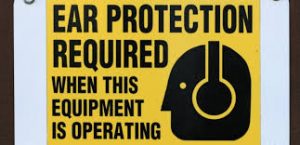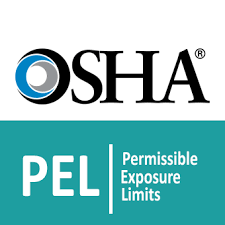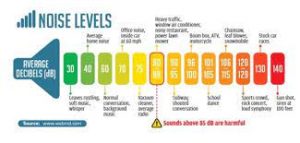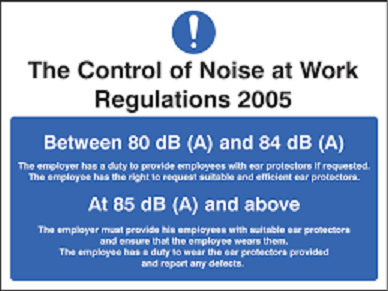Noise in the workplace can be a huge issue. It can cause hearing loss, stress, and other health problems. In order to protect employees, the government has put into place regulations that dictate how much noise is allowed in the workplace and what employers need to do to protect their workers’ hearing. In this blog post, we will discuss these regulations and what they mean for employees and bussiness.
Table of Contents
- Why Is It Important To Protect Your Hearing At Work?
- Two Main Regulations To Protect Workers From Noise-Related Hearing Loss
- The Requirements Of The Control of Noise at Work Regulations 2005
- What is OSHA Requirements For Hearing Protection?
- More About Noise Level
- An Employer’s Responsibility Regarding Noise In The Workplace?
- Conclusion
Why Is It Important To Protect Your Hearing At Work?
Noise-induced hearing loss is one of the most common work-related illnesses in the United States. Each year, an estimated 22 million people are exposed to hazardous levels of noise at work, and 2 million of them suffer from some degree of hearing loss as a result. Noise-induced hearing loss (NIHL) is a permanent and irreversible type of hearing damage that occurs when you are exposed to excessively loud noise.
There is no cure for NIHL, but it is preventable. By taking steps to reduce exposure to loud noise at work, you can protect your hearing and prevent noise-induced hearing loss.

Two Main Regulations To Protect Workers From Noise-Related Hearing Loss
There are a number of different regulations in place that are designed to protect workers from noise-related hearing loss.
One example of those regulations is the Control of Noise at Work Regulations 2005. These regulations place a legal duty on employers to assess and control noise risks in the workplace.
Another regulation is the Occupational Safety and Health Administration (OSHA) PELs, or permissible exposure limits. These limits define the maximum amount of time that workers can be exposed to noise before hearing damage may occur.

In addition to these regulations, there are a number of different standards and guidelines that employers should follow to protect workers from noise-related hearing loss.
An important part of these regulations is that employers are required to assess the risks to employees from exposure to noise at work. This assessment must take into account the type of work being carried out, the duration of exposure, and the noise levels to which workers are exposed.
Once the assessment has been carried out, employers are required to take steps to reduce the risk of noise-induced hearing loss. This may involve providing employees with personal protective equipment (PPE), such as earplugs or earmuffs, or changing the way that work is carried out.
The Requirements Of The Control of Noise at Work Regulations 2005
The Control of Noise at Work Regulations 2005 is the main piece of legislation governing noise in the workplace. These regulations place a duty on employers to assess and control the noise risks in their workplace.
In order to comply with the Control of Noise at Work Regulations, employers must fulfill the following requirements.

The first thing that employers need to do is assess the risks posed by noise in the workplace. This involves identifying any sources of loud noise and assessing the level of exposure that workers are likely to be subjected to.
Once the risks have been identified, employers need to put in place a series of measures to control the noise and reduce the exposure of workers to it.
The Control of Noise at Work Regulations 2005 also requires employers to provide employees with information and training on the risks posed by noise in the workplace and on how to protect themselves from these risks.
That’s why it’s important for employers to understand and comply with the Control of Noise at Work Regulations 200 (the “noise regulations”).
What is OSHA Requirements For Hearing Protection?
Under the promulgated regulation, OSHA requires that: Employers shall make hearing protectors available to all employees exposed to an 8-hour time-weighted average of 85 decibels or greater at no cost to the employees.
If you ask about the maximum noise levels at work, for an 8-hour workday, OSHA’s permissible exposure limit (PEL) for noise is 90 dBA for all workers. A 5 dBA exchange rate is used in the OSHA standard. As a result, when the noise level rises by 5 dB, the length of time someone can be exposed to a specific noise level to acquire NIHL is cut in half.
More About Noise Level
If you wonder what noise levels are acceptable, you should know that the decibel scale is used to quantify the intensity of sounds. A whisper has a decibel level of 30, ordinary conversation has a decibel level of 60, and a lawnmower has a decibel level of 90.

In the workplace, a hired worker may encounter sources of loud noises, and this will not necessarily be a construction site or a highway laying. Even office workers can suffer from loud indoor sounds.
In general, you can be exposed to hazardous noise from a number of sources, including:
-
- Machinery
- Power tools
- Construction sites
- Vehicles
- Loud music
- Crowd noise.
The employer is responsible for maintaining the hearing protectors in a sanitary and serviceable condition.
Employers shall provide employees exposed to noise levels at or above 85 decibels with an audiometric test upon initial assignment to noise exposure and at least once every three years thereafter.
An Employer’s Responsibility Regarding Noise In The Workplace?
It is the responsibility of the employer to ensure that safety measures are implemented to protect the employees from the harmful effects of noise in the workplace. The employer is also responsible for providing employees with information and training on the risks posed by noise in the workplace and on how to protect themselves from these risks.
In the case of an employer who is engaged in work that may expose employees to noise at or above a lower exposure action value (80dBA), a risk assessment must be conducted in consultation with workers and their representatives. When necessary, the risk assessment must be updated.

It is also important for employer to reinforce the need to use PPE. If you a worker is exposed to noise at work, it is important to wear the appropriate personal protective equipment (PPE). PPE can help to reduce your exposure to noise and protect your hearing.
There are a number of different types of PPE available, including earplugs, earmuffs and canal caps. Be aware of choosing the right type of PPE for the task at hand, as different types of PPE offer different levels of protection.
Conclusion
Thank you for reading! We hope this article was helpful in informing you about which regulations are there to protect your hearing at work. If you have any further questions about which regulations are there to protect your hearing at work, please contact us and we would be happy to help.
